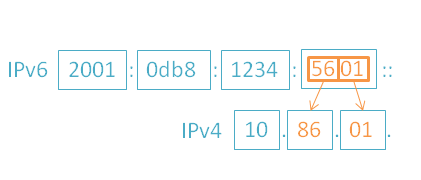Using Link-ID to automatically configure an IPv4 home network

Traditionally, when a home user sets up a home network, a lot of manual configuration is needed. While the IPv6 configuration can be done in an automated way by using Prefix Delegation, the IPv4 setup requires manual configuration of subnets and routes within the network. The mechanism of Link-ID describes a way to derive IPv4 subnets from the IPv6 subnet, so manual configuration of the first is no longer needed.
Network without Link-ID
Consider the following home network:

The home user has 2 Internal Routers (IR), connected to a different Customer Facing IP Interface (CFIP) of the eRouter (also known as Cable Gateway). The network is dual stack: both IPv4 and IPv6 subnets are used.
IPv6
For the IPv6 part of the home network, no configuration is needed. Both Internal Routers and the eRouter support prefix delegation. The eRouter gets its prefix from the MSO DHCPv6 server. The eRouter will then create smaller prefixes from this prefix, and delegate them to the Internal Routers. Each CPE device in the home network can then acquire its IPv6 address, either by DHCPv6 or stateless autoconfiguration.
IPv4
For the IPv4 part of the home network, things are different. The home user will have to do some manual configuration:
- The down-facing subnets of the Internal Routers will have to be configured.
- On the eRouter, the routes to these down-facing subnets will have to be added.
This manual configuration can typically be done with the help of the web interfaces of both eRouter and the Internal Routers. While this is quite doable for someone with some network expertise, this is a major obstacle for the majority of home users. It is expected that in the future, the need for home networks will rise. Operators could fulfill this need by offering home network configuration to their clients. The manual configuration of subnets and routes could then be performed by technicians of the operators, which will however induce a certain cost.
Link-ID mechanism
To counter the problem described above, a mechanism is developed to automatically create IPv4 subnets from IPv6 subnets.

The Link-ID constitutes of the fourth 16-bit block of an IPv6 address, and of the middle 2 octets of an IPv4 address.
Following steps are taken to create an IPv4 subnet from an IPv6 subnet:
- The first octet of the IPv4 address is set to 10.
- The second and third octets of the IPv4 address are the decimal equivalent of the IPv6 Link octets.
To calculate an IR destination prefix for routing, the eRouter has to perform the previous 2 steps. The IPv4 prefix length of the destination prefix is calculated as follows:
- The IPv4 prefix length of a link is aligned to the IPv6 prefix of that link. This is done by subtracting 40 bits of the IPv6 prefix length.
Network with Link-ID
The following picture shows the network from above, when all routers in the network support Link-ID:

For IPv6, nothing changes. Everything is still configured with the help of prefix delegation.
For IPv4, things that had to be configured manually before, now are automatically created with the help of the Link-ID mechanism:
- The down-facing subnets of the Internal Routers are now derived automatically from their IPv6 counterparts.
- The routes to these subnets are automatically added by the eRouter. This can be done because the eRouter has delegated the IPv6 prefixes for these subnets, and knows the corresponding IPv4 subnets are created automatically from these IPv6 prefixes.
Background on Link-ID
The mechanism of Link-ID is described in eRouter-N-14.1155-3 (http://www.cablelabs.com/specification/ipv4-and-ipv6-erouter-specification/). Link-ID fits into the vision of HIPnet (Home IP Networking). See also http://www.cablelabs.com/the-future-of-home-networking-putting-the-hip-in-hipnet.
























